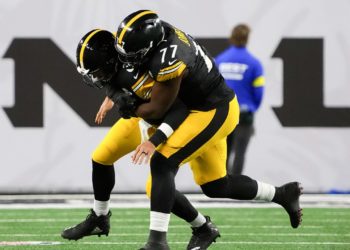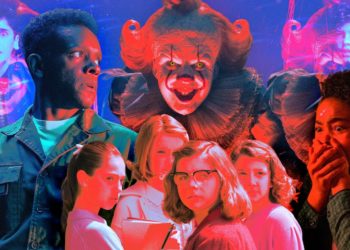In 1976, Susan Lucas asked a local barber in Ealing, West London, to part the back of her short hair — which she greased on the sides to emulate the Bride of Frankenstein — and shave off the entire middle section.
“He was very shocked and I think he thought I was kidding at first,” she recalled in a 2009 interview. But eventually he relented. When he finished shearing off almost all her hair, she said, “I think he felt bad about what he’d done.”
Two tufts remained on either side of her shaved head, flared upward to resemble cat ears.
“I was really pleased with it,” she said.
She dyed her new ears black, slicked them up with dabs of Vicks VapoRub and christened herself with a new name: Soo Catwoman.
That summer, she met and befriended Sid Vicious and Johnny Rotten of the Sex Pistols at Club Louise, a hotbed for musicians on the growing punk scene. She emerged as the face of that scene when she graced the cover of Anarchy in the U.K., a Sex Pistols fanzine.
With long tendrils of eyeliner swiped across her lids, a black star on her cheek and a skull dangling from one ear, her look, as well as her expression — a devil-may-care gaze that refused to waver — became a defining image of the vibrant, corrosive glamour of British punk.
“For me, rock ’n’ roll is all about haircut and attitude,” Bob Gruen, a photographer who documented the early punk era, said in an interview. “And she had both.”
Soo Catwoman died on Sept. 30 at a hospital in London. She was 70. Her daughter, Dion October Lucas, said the cause was complications of meningitis.
The fanzine photograph was published without her knowledge, and her face was soon reproduced on countless T-shirts and posters, often without permission or payment.
“It seems that my face and image, my ‘art’ as some have called it, has been hijacked,” she said in 2009, adding, “I’ve lost count of the amount of things that my face has since been used to publicize over the years, from books to clothing and everything in between.”
As her likeness became synonymous with punk, Soo Catwoman was a frequent presence in British newspapers. She was later portrayed onscreen in Julien Temple’s mockumentary “The Great Rock ’n’ Roll Swindle” (1980) and in the 2022 mini-series “Pistol.”
Her D.I.Y. ethos influenced designers including Thierry Mugler, Chanel and Junya Watanabe, whose models strutted down the runway wearing warped Union Jacks and spiked hair. Keith Flint of the band the Prodigy fashioned his own acid-green cat ears after hers.
Soo Catwoman “was the female face of punk, the sexual opposite of Johnny Rotten,” Mark Perry wrote in his book “And God Created Punk” (1996). “Next to Vivienne Westwood she was the most influential woman in punk fashion. If she wore something, others followed.”
Susan Helene Lucas was born on Oct. 24, 1954, in London to John William Lucas, who was in the merchant navy, and Mary (Cobb) Lucas. She was the 10th of 15 children, and her parents joined two houses in the Chiswick area to make room for their large family.
As a teenager, inspired by the flamboyance of glam rockers like David Bowie, Susan dyed a pink stripe into her pointed bangs.
At 21, after debuting her signature haircut, which she paired with jewelry made from found objects like needles and broken razor blades, she became a fixture, photographed with Billy Idol and members of the Damned. For a time in the 1970s, she shared a flat with Sid Vicious and earned the nickname Auntie Sue for her kindness toward him.
In 1979, she contributed backing vocals to the Invaders’ album “Test Card” and sang lead on their single “Backstreet Romeo.” In 1989, after a long absence from the scene, she resurfaced to record a cover of the O’Jays song “Back Stabbers” with Derwood Andrews of Generation X and Rat Scabies of the Damned.
As punk permeated the mainstream, Soo Catwoman largely withdrew from the public eye. She went from being “insulted on a daily basis,” with people avoiding her on public transportation “as if I were contagious,” to watching privileged strangers infiltrate the scene. “Those of us with holes in our jumpers didn’t actually put them there on purpose,” she said in a 2007 interview with the website Punk77.
“I had an exhibit in London a while ago, and Soo came to the opening,” Mr. Gruen said, “and she was this sweet English housewife.”
Speaking to The Times of London after her mother’s death, Dion Lucas said, “Although she was the epitome of punk, as far as her image, she was a hippie underneath it all.”
She home-schooled her children for a while and led an effort to save a tree outside their school. In her free time, she read the Romantic poets and listened to music ranging from Neil Young to Motown.
In 2008, her daughter launched a campaign to reclaim her image. She silk-screened T-shirts and printed tote bags, which she and her mother sold online.
“My mother’s image has at times been associated with negativity, words like ‘destroy’ and ‘anarchy,’ and the mental pictures they conjure up don’t really fit with the person she is,” Dion Lucas said in 2009. “Her beliefs are more about a mental revolution — about people learning to think for themselves.”
In addition to her daughter, Soo Catwoman is survived by a son, Shem Lucas; 10 brothers, Paul, John, Tony, Steve, Joe, Jim, Dave, Robert, Roland and Adam; a sister, Linda Lucas Kenny; and four grandchildren.
Reflecting on her legacy on her Myspace page years ago, Soo Catwoman seemed bemused by the evolution of the look she helped create.
“It still seems strange to me that what happened back then could bring about so many changes, in hair, music, fashion, etc.,” she wrote. “It seems quite funny that what started out as anti-fashion became fashion in itself.”
The post Soo Catwoman, ‘the Female Face of Punk,’ Is Dead at 70 appeared first on New York Times.




